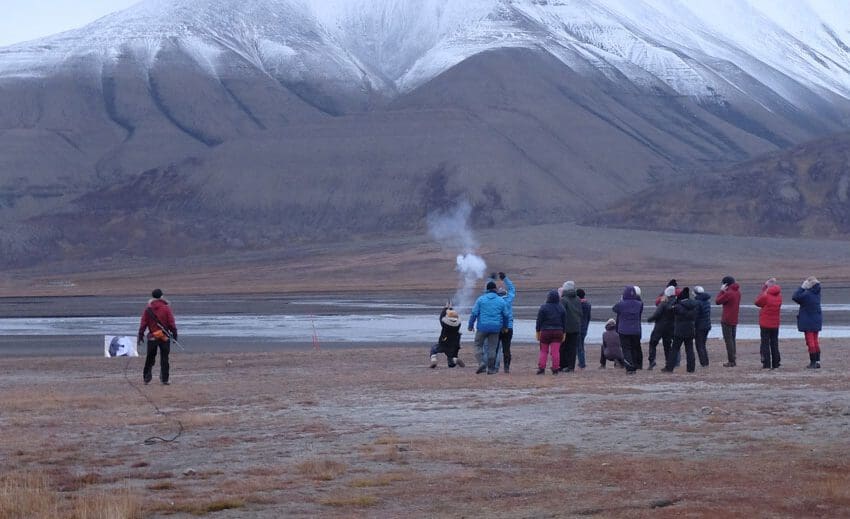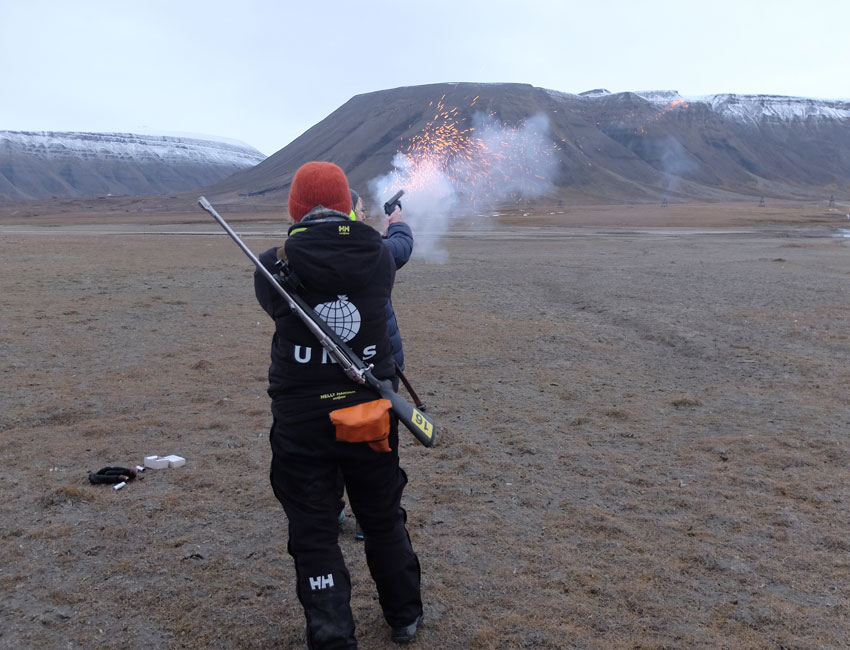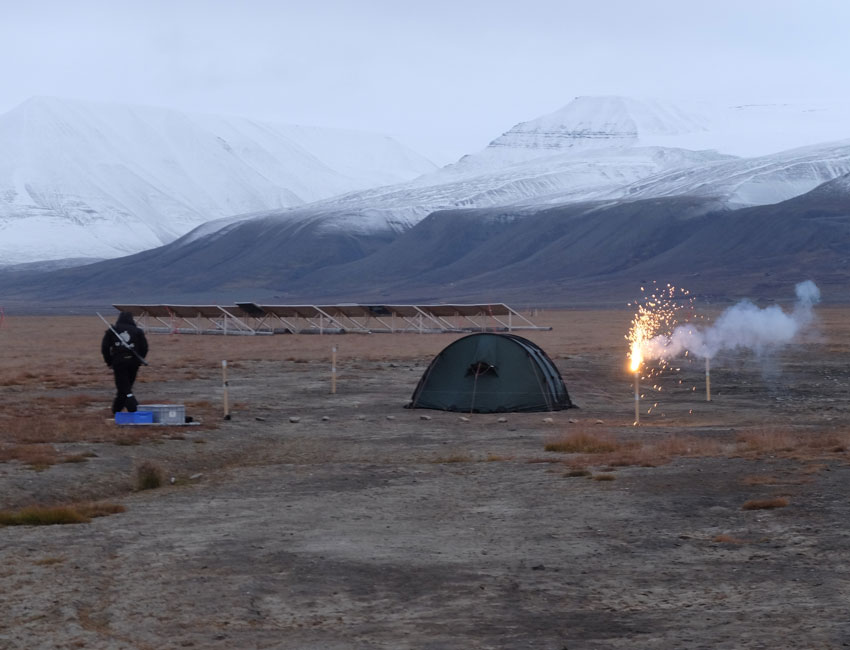Popular polar bear safety course

How to behave in close encounters with a polar bear. Photo: Eva Therese Jenssen/UNIS.
Top image: One of the course modules dealt with how to behave in close encounters with a polar bear. Photo: Eva Therese Jenssen/UNIS.
Last week, the Arctic Safety Centre in collaboration with UNIS arranged a polar bear safety course for the locals in Longyearbyen. Feedback from the course participants was very positive and next course is planned for October and will focus on safe behaviour in glacier landscapes.
28 September 2020
Part of the Arctic Safety Centre (ASC) mission is to be a knowledge centre for the residents of Longyearbyen and Svalbard. In this context, the ASC together with UNIS arranged a three-module polar bear safety course for Longyearbyen residents last week. The course was a combination of informational webinar and two practical training sessions, where focus was on polar bear behaviour, how to behave in an encounter with polar bears and practical training in how to use polar bear deterrents.
The participants ranged from people who have lived in Svalbard for many years to people who have just moved to the island. The feedback from participants were very good and that it was a very informative course on how to avoid confrontation with polar bears.
– This is a good example of a practical course based on local competence and knowledge and it is very encouraging that so many of the residents, even those who have lived here for many years, found this course useful, says acting ASC manager Martin Indreiten.

HSE director Fred Skancke Hansen was one of the course instructors and he also appreciated that there were also participants who have been in Svalbard for several years.
– The development of ASC is based on the years of experience UNIS has of conducting fieldwork in a safe manner. We have a structural approach to safety in the high Arctic and our competence is now shared with the residents, he says.
Next course is already in planning and is called Slippery and Steep (“Bratt og glatt” in Norwegian), where focus will be on manoeuvring in glacier terrain. This course will be arranged in October.
In addition to safety courses for the industry, academia and residents, the ASC also offers several master courses in high Arctic safety. Collaboration with industry to develop new knowledge and climate surveillance elements is also an important feature in the Arctic Safety Centre.
Links:
Arctic Safety Centre
